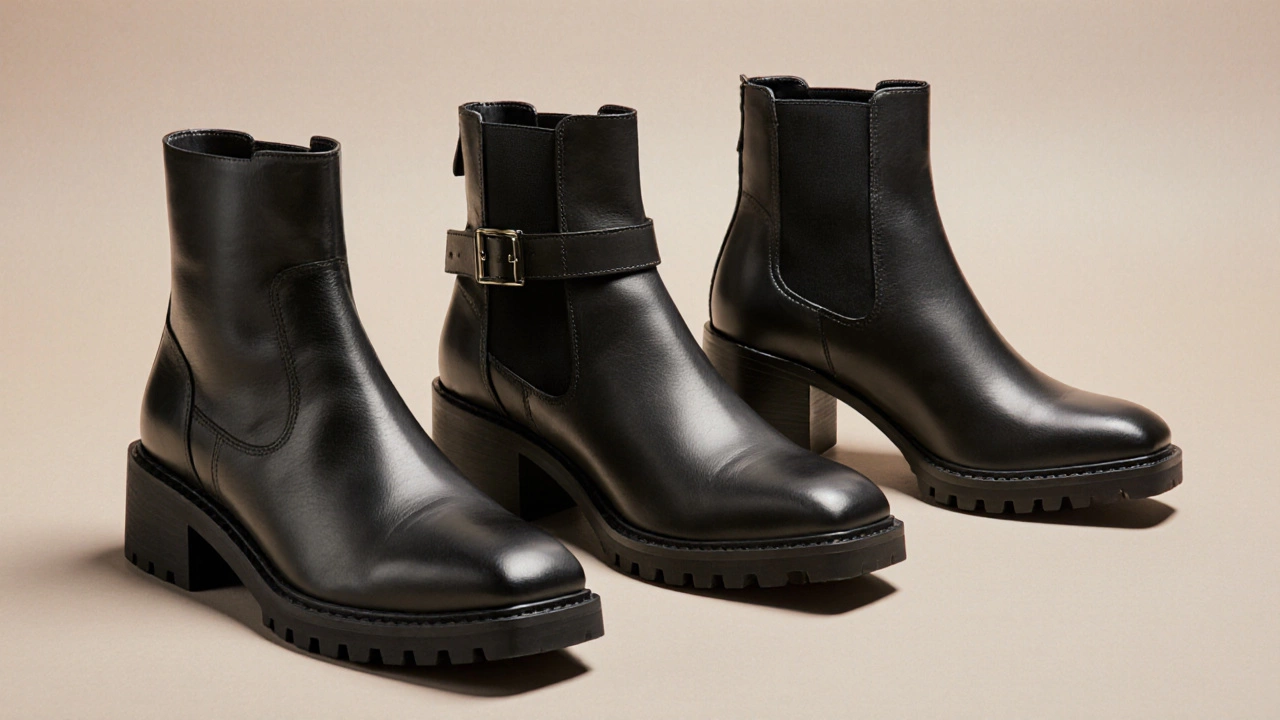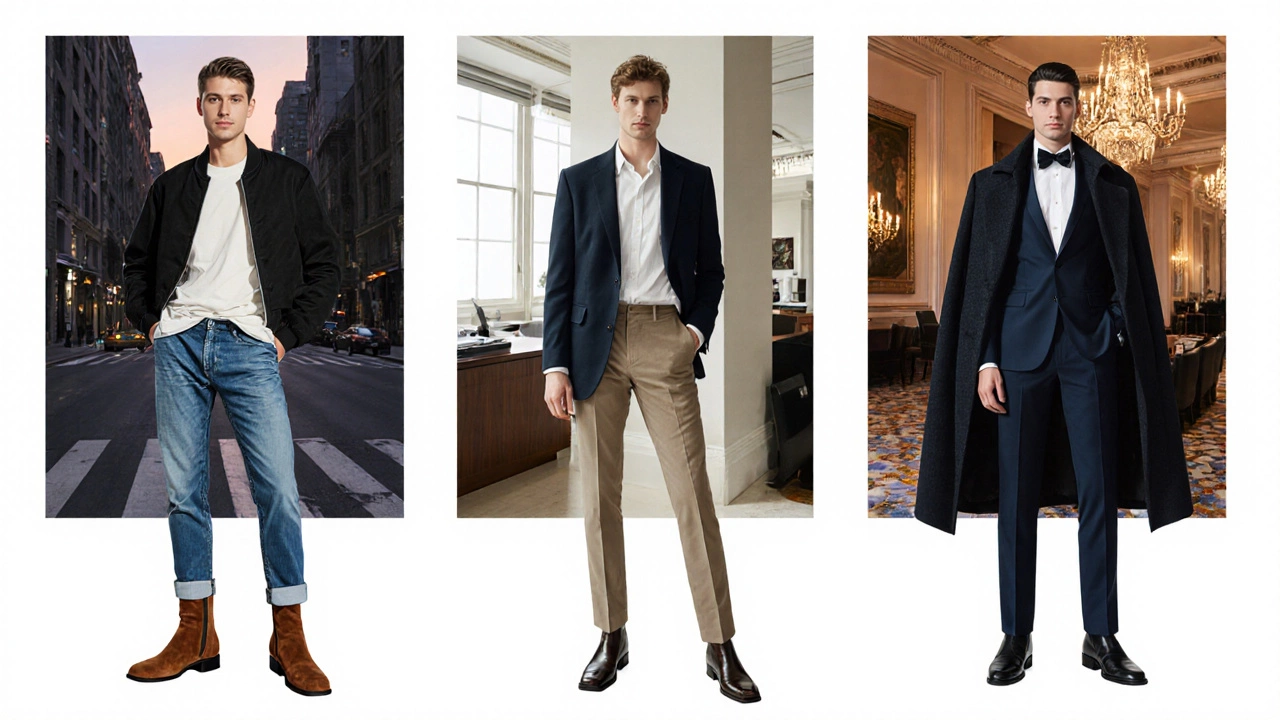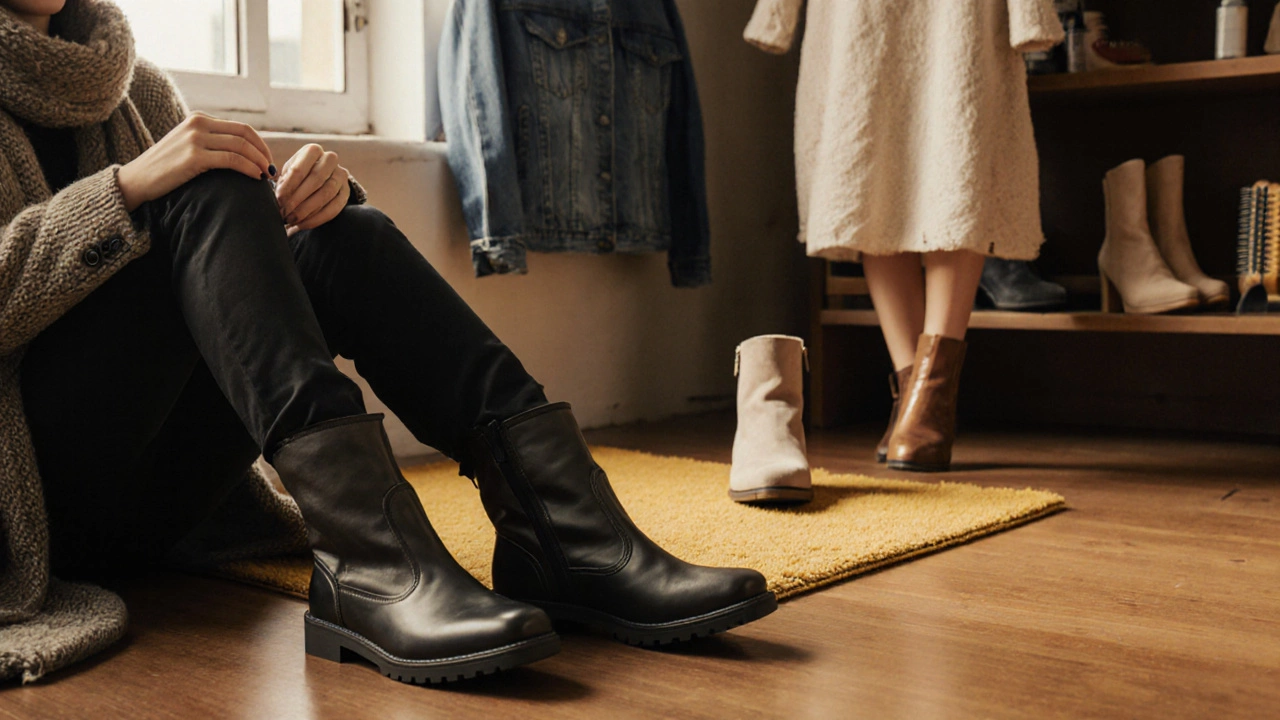Square Toe Boots: Who Should Wear Them?

Foot Shape & Boot Suitability Calculator
When it comes to bold footwear choices, square toe boots are a stylish boot featuring a broad, rectangular toe box that adds a modern edge to outfits have become a go‑to for many fashion lovers. But the question everyone asks is: "Do they actually work for me?" This guide walks you through the foot types, outfits, seasons, and personal preferences that determine whether square toe boots belong in your closet.
What Makes Square Toe Boots Different?
Square toe boots differ from classic pointed or round‑toed styles because the toe box is cut flat and wide. The design originated in the 1970s as a reaction to skinny silhouettes, and it resurfaced in the 2020s thanks to runway pushes from designers like Balenciaga and Alexander Wang. The shape adds visual balance for people with broader shoulders or hips, and it can create a more structured look for slimmer frames.
Foot Shape and Comfort: Who’s a Natural Fit?
Foot anatomy plays a huge role in comfort. Below are the three most common foot shapes and how they interact with a square toe:
- Wide feet - Benefit the most. The roomy toe box reduces pressure on the metatarsals, preventing painful bunions.
- Neutral/average feet - Generally comfortable, but make sure the boot’s internal padding supports the arch.
- Narrow feet - May feel loose. Look for boots with adjustable straps or elastic panels to keep the foot snug.
If you’ve ever complained about cramped toes in pointed boots, square toe versions are likely to feel like a breath of fresh air.
Outfit Pairings: From Casual to Formal
Square toe boots are versatile, but pairing them correctly maximizes style impact.
- Casual weekend: Pair leather or suede square toe boots with skinny jeans, a relaxed tee, and a bomber jacket. The angular toe adds a subtle statement without overwhelming the look.
- Business casual: Choose a mid‑cuff leather boot with a modest heel and wear it with tapered chinos, a tucked‑in button‑down, and a structured blazer. The boot’s square silhouette balances the sharpness of the blazer.
- Formal events: Opt for polished leather boots with a sleek silhouette and pair them with a tailored suit or a long wool coat. The square toe adds a contemporary edge while retaining elegance.
Key tip: Keep the rest of your outfit relatively streamlined. The boot is already a focal point, so avoid overly busy patterns on the top half.

Seasonal Considerations: When to Wear Them?
Because the shape doesn’t dictate material, square toe boots work year‑round. However, certain fabrics align better with weather conditions.
- Winter: Leather or waterproof suede with a thick rubber sole keeps feet warm and dry. Pair with wool socks and layered knits.
- Spring/autumn: Lighter suede or canvas versions work well with light coats and denim.
- Summer: Look for breathable leather and a lower shaft (ankle‑height) to avoid overheating.
People in colder climates-like Vancouver residents-often appreciate the extra ankle coverage that mid‑cuff or knee‑high square toe boots provide.
Height, Ankle Support, and Platform Options
Height plays a subtle role. Shorter individuals can benefit from a slight platform or a low heel that adds elevation without throwing off proportions. Taller folks might opt for a sleek, low‑profile sole to keep the silhouette elongated. Ankle support is crucial for anyone who walks a lot; boots with reinforced stitching around the collar help prevent strain.
Choosing the Right Pair: A Quick Checklist
| Foot Shape | Recommended Toe Shape | Why Square Toe Works |
|---|---|---|
| Wide | Square | Provides extra room, reduces pressure on joints |
| Neutral | Square or Round | Comfortable with proper arch support |
| Narrow | Round or Adjustable | Look for elastic inserts to avoid looseness |
When you shop, keep this checklist in mind:
- Check the internal width of the toe box-measure at the widest point.
- Feel the arch support; a built‑in cushioned footbed is a plus.
- Inspect the sole material-rubber for grip in wet weather, leather for formal settings.
- Try on with the socks you’ll usually wear; thickness matters.
- Walk around the store; the boot should feel stable, not wobbling.

Common Pitfalls and How to Avoid Them
Even the best‑looking pair can feel off if you ignore a few details.
- Too loose at the ankle: Choose boots with lacing, buckles, or elastic panels.
- Hard soles: A completely rigid sole can cause foot fatigue. Look for shock‑absorbing midsoles.
- Unmatched material: Pair suede boots with heavy rain and you’ll end up with soggy shoes. Stick to waterproof leather for wet climates.
Key Takeaways
- Square toe boots suit wide and average foot shapes best; narrow feet need extra adjustability.
- They work across casual, business‑casual, and formal outfits-just keep the rest of your look streamlined.
- Choose material based on season: waterproof leather for winter, suede or canvas for milder weather.
- Height, ankle support, and heel style can be tuned to your body type.
- Use the checklist and foot‑shape table to pick a pair that feels as good as it looks.
Frequently Asked Questions
Do square toe boots fit people with narrow feet?
Yes, but you’ll want a model with adjustable straps, elastic gussets, or removable insoles to keep the foot from sliding around. Without some form of adjustment, the wide toe box can feel floppy.
Can I wear square toe boots with skinny jeans?
Absolutely. The contrast between the tight leg and the bold toe creates a balanced silhouette. Tuck the jeans slightly into the boot for a polished look.
Are square toe boots appropriate for formal events?
When you choose a sleek leather pair with a low heel and a clean finish, they can replace dress shoes in many formal settings. Pair with a tailored suit and keep accessories minimal.
How should I care for suede square toe boots?
Brush them with a soft suede brush after each wear, apply a water‑repellent spray before the first rainy season, and store them with shoe trees to maintain shape.
What heel height works best for everyday wear?
A heel between 1 to 2 inches offers a subtle lift without sacrificing comfort. If you’re on your feet all day, look for boots with built‑in cushioning.